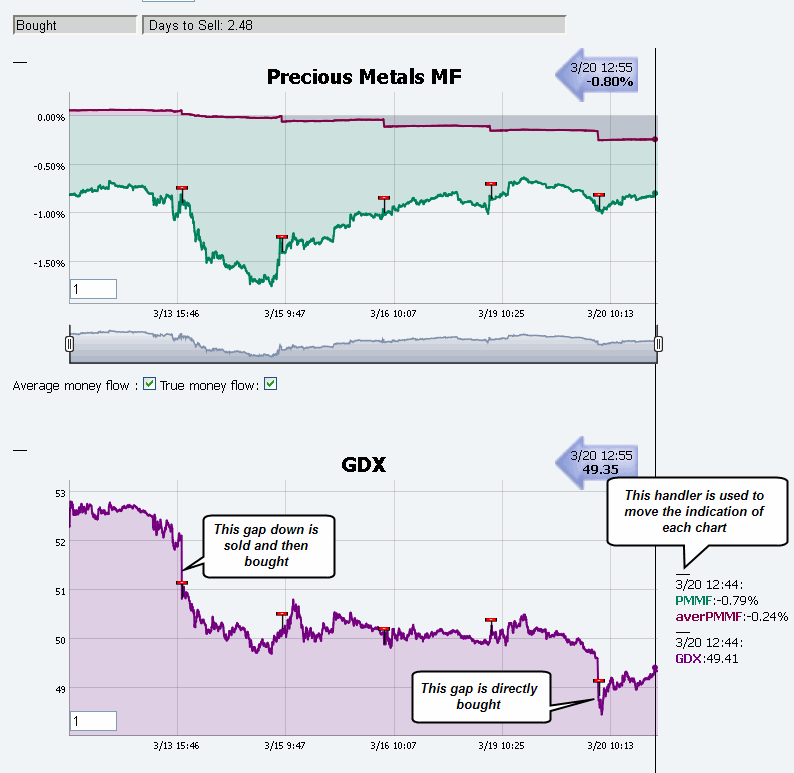
Originally Posted by
DJones

Thanks, and I agree. I'll take this one step further, and maybe Pascal can comment. I'll go out on a limb and give him something specific to shoot down if I misstate / misunderstand what we are all doing here.
Looking at where we are in MF in context, the 20DMF reminded me that we are still < 0, i.e. in negative territory, and the MF trend is clearly down. In the last 5 days, of course, the MF has been clearly up, as seen by the RT charts. So compared with 5 days ago MF is up - big money moving in. Over the last 20, however, big money has moved out.
What's noise, and what's the trend? There's the question for model. In other words, what - and how much - does a clear 5 day positive change in MF mean within the context of (1) absolute negative MF (e.g. negative number) and (2) a longer term (e.g. 20D trend/change) negative MF.
Obviously there's a profound implication for the value of the RT vs. EOD model in the answer to that question. The more the long term matters, the more the short term, and therefore RT model, becomes irrelevant. The more the (immediately detected) short term changes drive future price changes, the more the RT model becomes invaluable.
I can't believe that volume (MF) doesn't drive price. That's an axiom of technical trading. So it can't be that we are watching money move in in volume with no price increase. I just won't believe that. Either (1) we aren't measuring volume correctly (and I'll trust Pascal that that isn't true), or (2) extremely short term volume (whatever that period is - 1 minute? 5 days? 10 days?) is noise.






 Reply With Quote
Reply With Quote